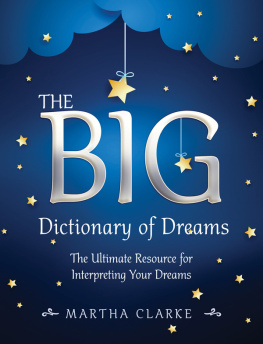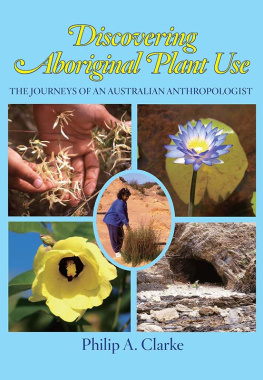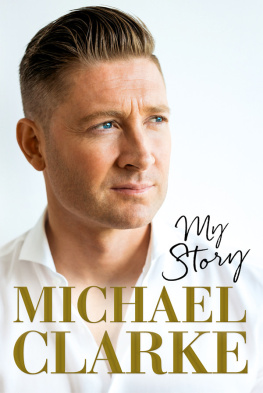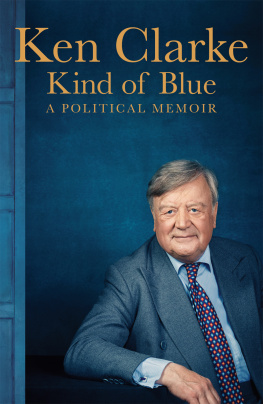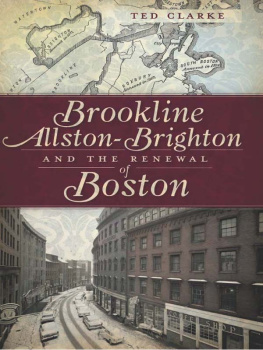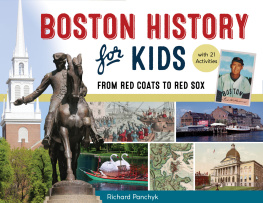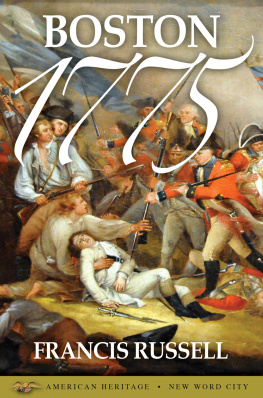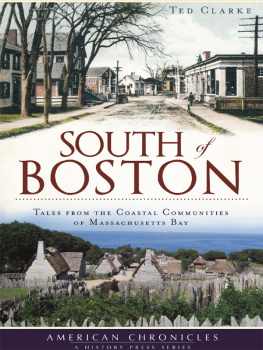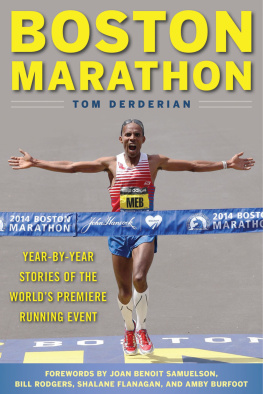

Published by The History Press
Charleston, SC 29403
www.historypress.net
Copyright 2008 by Ted Clarke
All rights reserved
Cover design and internal illustrations by Marshall Hudson.
First published 2008
e-book edition 2013
Manufactured in the United States
ISBN 978.1.62584.391.3
Library of Congress Cataloging-in-Publication Data
Clarke, Theodore G.
Boston curiosities : a history of beantown barons, molasses mayhem, polemic patriots and the fluff in between / Ted Clarke.
p. cm.
print edition ISBN 978-1-59629-580-3
1. Boston (Mass.)--History--Anecdotes. 2. Boston (Mass.)--Biography--Anecdotes. 3. Boston (Mass.)--Buildings, structures, etc.--Anecdotes. 4. Cookery--Massachusetts--Boston. 5. Historic buildings--Massachusetts--Boston. I. Title.
F73.36.C53 2008
974.461--dc22
2008032145
Notice: The information in this book is true and complete to the best of our knowledge. It is offered without guarantee on the part of the author or The History Press. The author and The History Press disclaim all liability in connection with the use of this book.
All rights reserved. No part of this book may be reproduced or transmitted in any form whatsoever without prior written permission from the publisher except in the case of brief quotations embodied in critical articles and reviews.
CONTENTS

INTRODUCTION
Boston is a favorite city for travelers and most of the people who live there love itfor a reason. Boston is rich in tradition and lore. But there are more stories to tell about Boston and the towns around it. Here youll find short, fascinating accounts of little-known events told briefly and briskly. To illustrate the interconnectedness of these tales, consider the following information.
Edgar Allan Poe lived and worked in Boston, although he never spoke kindly of the city or of its other writers. Poe, however, begins an interesting link of Boston people and stories. It is claimed that Edgar Allan Poes macabre tale The Fall of the House of Usher is based upon actual events that took place on the site of Lewis Wharf in the eighteenth century. Two loversa sailor and the young wife of an elderly manwere trapped in their trysting place, a mysterious underground tunnel, by the avenging husband. Years later, when the old Usher house was torn down in 1800, two embracing skeletons were found at the foot of some steps behind a rusty iron gate.
Lewis Wharf had been Hancocks Wharf, named for its owner, Thomas Hancock, uncle of John. Before that it had been Clarks Wharf. William Clark was a wealthy merchant and city councilor. He owned many ships and he, or at least his wharf, seems to connect us through time to the story of the young lovers. Clarks Wharf was also the location of the first house owned by Paul Revere. Revere later moved to North Square, putting him opposite the mansion of the same William Clark, one of the finest houses in Boston during the 1700s. The three-story brick mansion and its proud gardens later were owned by Sir Charles Henry Frankland, a wealthy descendant of Oliver Cromwell.
King George II gave Frankland the choice of becoming royal governor of Massachusetts or customs collector and he chose the latter, as it produced better income. The staircase in the main hall of the Clark/Frankland House was so wide that Frankland used to ride his pony up and down the stairs to the second and third floors. But odd as that seems, the story of Frankland that follows is even stranger. Sir Charles stars in the story of The Baronet and the Barmaid, but youll have to dig under some rubble to find him.
Connections between people and events in the compact Boston area tend sometimes to trip over one another. Youre likely to find them as you read. The chapters in this book have been arranged so that some of this serendipity may more easily happen.
These unique selections will make fun and fast reading for those riding or waiting for their plane, train or bus, or for the New Englander happy to find more intriguing stories about his or her favorite city. Boston travel books are common. This book is uncommon, and its not just for travelers. Many chapters fit the subject heading of curiosities; some dont.
The names of some of the people will resonate, but this book takes a different look at them. Most of the stories have not been widely written about. Some are totally off the radar, even for historians. No other book covers what this one does. Youd need an extensive library of esoteric sources and a wide scope of Internet to gather these. It took a historian with a love of Boston to put this together.
The text has been divided into logical sections, but the reader can skip around or read from cover to cover. Boston Curiosities will make a medley of memorable moments.
Part One
UNSUNG BUT FASCINATING BOSTONIANS
BOSTONS JOHNNY APPLESEED
When settlers first came to Massachusetts from England nearly four hundred years ago, they found themselves in a mostly barren, sometimes hostile territory where they would have to depend mostly on their own inner strengths and ingenuity to survive. At times they must have felt quite alone. But one man seemed to like it that way.
Reverend William Blackstone was not the first English settler in the New World. He was in elementary school when John Smith stepped ashore in Jamestown. He had finished college, earned a masters degree and become a minister by the time the Pilgrims had held the first Thanksgiving. In June 1623, Blackstone was one of two ministers onboard the ship of Captain Robert Gorges en route to America to propagate the gospel in a church settlement. They reached Wessagusset (later Weymouth) and moved into the nearly deserted settlement in the middle of September.
Gorgess plans went awry and he and many of the others returned to England. Blackstone (or Blaxton, as he is sometimes called) left Wessagusset, but not Massachusetts Bay. He moved, by himself, to Shawmut peninsula in what is now Boston and lived there as the only non-Indian on what would become Beacon Hill, overlooking the mouth of the Charles River.
If Blackstone had been thinking about real estate futures, he chose well. The hill was higher in those days and he chose the protected south side, which still had great views. Location, location, location! His home was where Louisburg Square would be built and where notables like John Kerry would squat in more recent times. Blackstone was without nobby neighbors, but not without material possessions. He was a lot better off and much more prepared than many settlers in early Massachusetts.
Blackstone was a virtual Robinson Crusoe. He brought to America nearly two hundred books in several languages and had the largest library on these shores for some time to come. He also brought foodstuffs and saved apple cores from the ship and planted them so that soon he had a fully flowering orchard downhill on what would become Americas first public park, the Boston Common. He probably also inherited many of the possessions of Gorges and his followers when they returned to England, including a bull on which he rode around.
By the time the Puritans arrived in Boston in 1630 on the huge Arabella and two other vessels, Blackstone was living comfortably in a house he had built and probably munching on fruit like Johnny Appleseed. The Puritans, led by Governor Winthrop, chose Charlestown as their dwelling place, but that wasnt wise. Many of them soon fell sick and died from bad drinking water.
Next page


